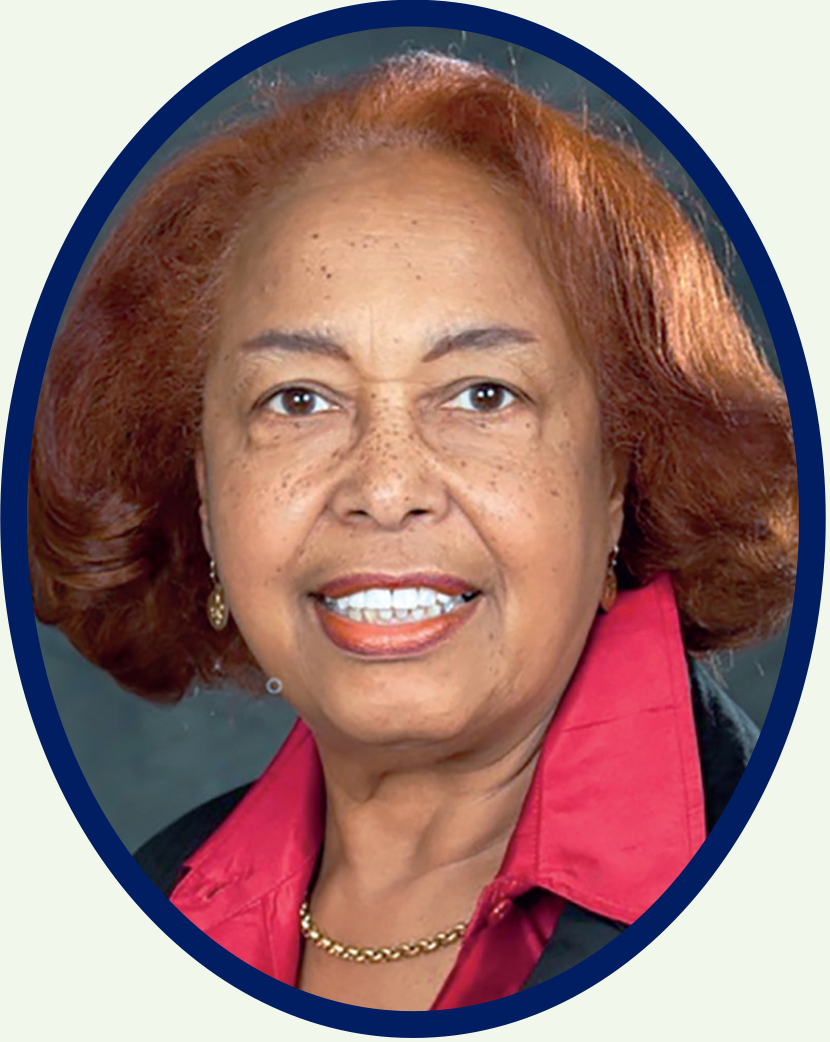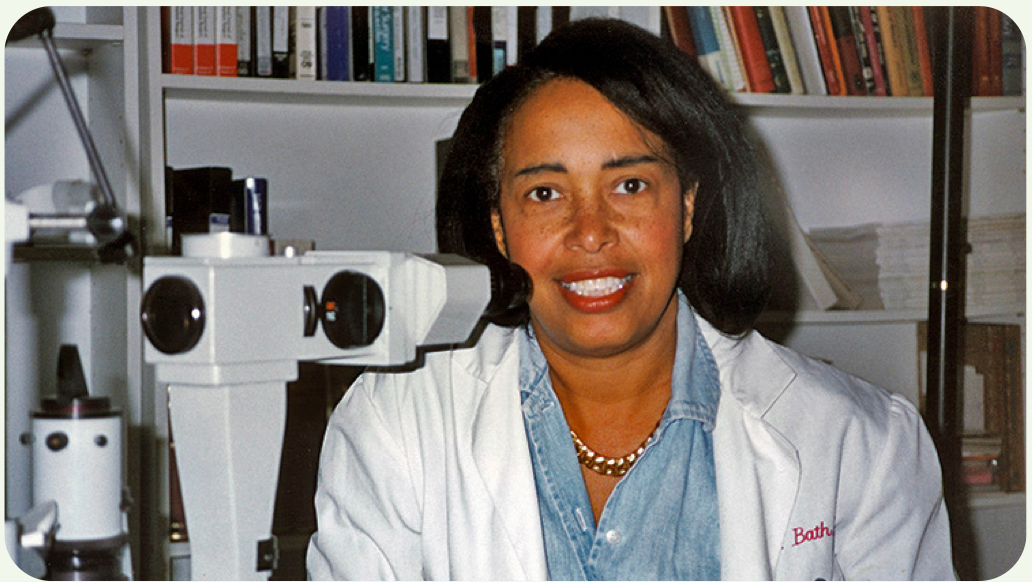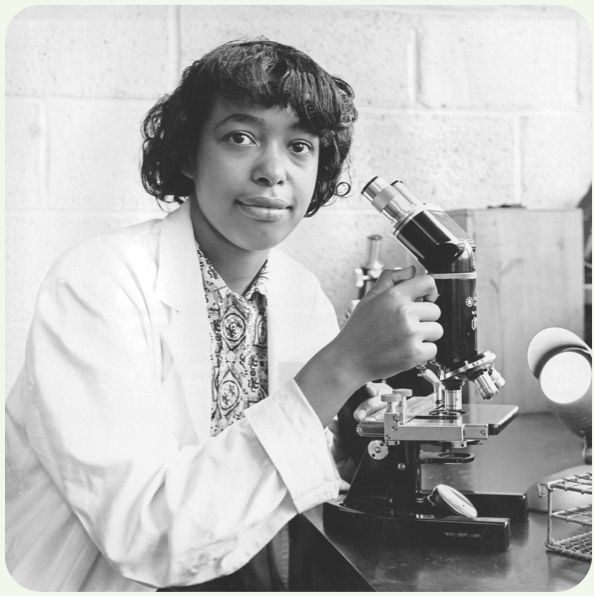Patricia Era Bath, MD
Ophthalmologist
Inventor, laser scientist, a humanitarian and academic
Patricia Era Bath, MD Heading link

The Department of Medicine Inclusion Council honors and celebrates thelife and accomplishments of Patrica Era Bath, MD, (November 4, 1942 -May 30, 2019). Dr. Bath may be best known for her invention calledLaserphaco Probe a device and technique for cataract surgery. She alsobecame the first woman member of the Jules Stein Eye Institute. Bath wasthe first African-American woman doctor to receive a patent for a medicalpurpose. A holder of five patents, she also founded the non-profitAmerican Institute for the Prevention of Blindness in Washington, D.C.
She received her medical degree from Howard University College of Medicine in Washington, D.C., interned at Harlem Hospital from1968 to 1969, and completed a fellowship in ophthalmology at Columbia University from 1969 to 1970. Patricia Bath was the firstAfrican American to complete an ophthalmology residency with New York University’s School of Medicine, in 1973. Two years later,the UCLA School of Medicine appointed her as the first female faculty member in its department of ophthalmology. Believing that“eyesight is a basic human right,” Dr. Bath went on to co-found the American Institute for the Prevention of Blindness in 1977, anorganization whose mission is to protect, preserve, and restore the gift of sight.
Interning in New York City in the 1960s sparked a revelation for Patricia Era Bath, MD. Bath, noticing that rates of blindness andvisual impairment were much higher at the Harlem Hospital’s eye clinic, which served many Black patients, than at the eye clinic atColumbia University, which mostly served whites. That observation spurred her to conduct a study that found twice the rate ofblindness among African-Americans compared with whites. Throughout the rest of her career, Bath explored inequities in visioncare. She created the discipline of community ophthalmology, which approaches vision care from the perspectives of community medicine and public health.
Patricia Era Bath, MD Heading link

Patricia Era Bath, MD Heading link
